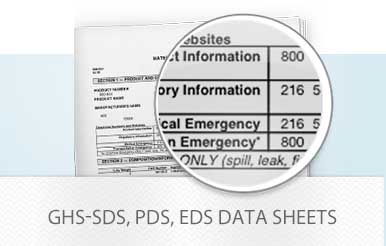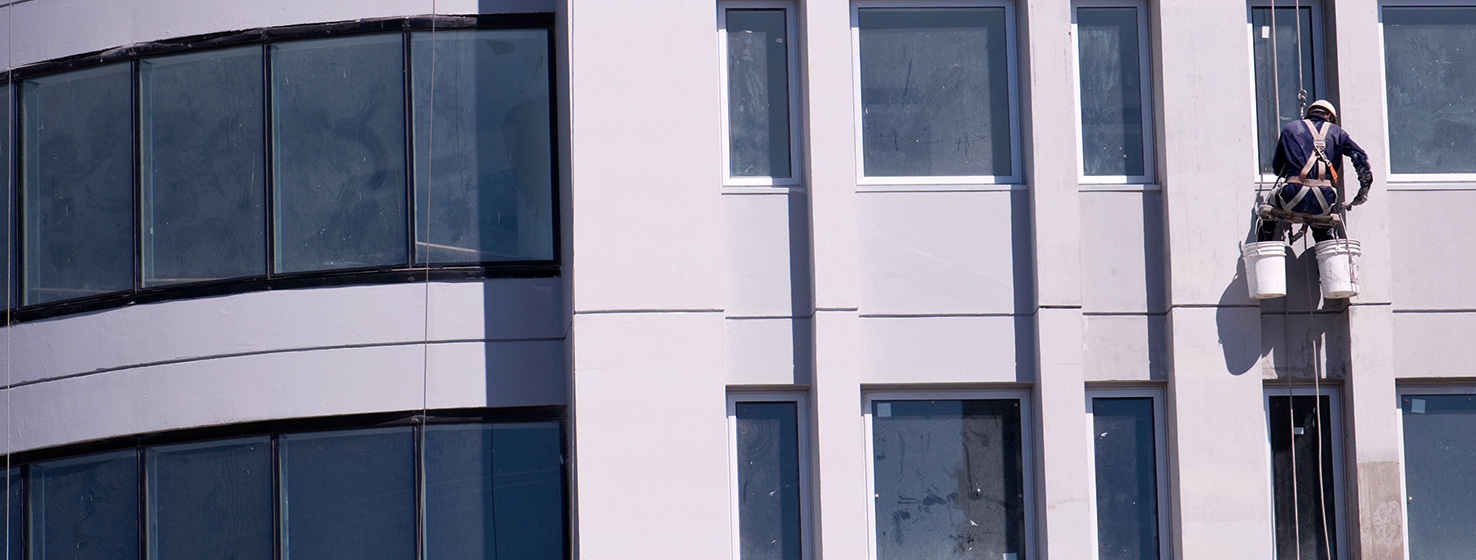Some key considerations for cold-weather product selection and application:
Water can be a problem
Concrete exposed to repeated freezing and thawing can be damaged by water that enters the surface.
If water fills a critical percentage of the concrete’s pore structure (usually 90% or more), the volume change that occurs during the freeze-thaw process can displace the concrete. This often results in scaling, spalling or other types of delamination.
How coatings can help
The primary defense against such damage is entrained air in the concrete mix design, but coatings can play a role as well.
By helping protect concrete from taking on large amounts of water, coatings can further alleviate concerns about freeze-thaw damage.
What to watch for
So how does cold weather affect the selection and application of coatings? According to Sean Meracle, architectural account executive for the Sherwin-Williams Concrete Products group, the surface temperature of the concrete substrate is one of the most important factors to consider.
“Coatings today generally offer enough flexibility to accommodate some degree of thermal movement once they’ve cured, but it’s the application phase of the coating life that is more critical,” Meracle says.
Low-temp coatings
While most coatings are manufactured for application at temperatures between 50 and 100 degrees Fahrenheit, Sherwin-Williams provides a number of products that are formulated for application in colder environments.
“Many of our exterior water-based architectural coatings can be applied when the surface temperature is as low as 35 degrees Fahrenheit,” Meracle says. “Our solvent-based concrete coatings can all be applied at surface temperatures down to 20 degrees Fahrenheit.”
4 Steps to Concrete Coating Success at Lower Temperatures
1. Use elastomerics for thermal movement. If a coated concrete wall is expected to withstand an unusual amount of thermal movement, elastomeric coatings will help to accommodate that movement and continue to provide a consistent protective film. Coating products that prevent the ingress of water into the concrete surface can also help protect against freeze-thaw damage.
2. Remove chemical residue. In cold climates, vertical concrete in parking garages or adjacent to streets, sidewalks or parking lots can be exposed to de-icing salts or other chemicals that leave a residue on the concrete surface. It’s important to remove this residue before applying any coating. You can remove most salts by water washing, but address any other chemicals specifically, based on their composition.
3. Don’t add solvents. Temperature also has an effect on coating application. All coating materials change in viscosity with changes in temperature. Colder materials thicken and become more difficult to apply, while material applied to a structure that is very hot or in direct sunlight may dry too fast, fail to adhere properly and produce an undesirable finish. Given today’s construction demands and fast-track scheduling practices, it may be tempting to add water or other solvents as a way to enable application and therefore extend the work day or season. Resist the temptation, though, because manufacturers don’t anticipate these additives when formulating coating products or testing their performance.
4. Make sure the surface is dry. You should also make sure any water that was part of the concrete mix during placement, or was introduced by weather or surface preparation procedures, is allowed to evaporate before you apply a coating, so that the material can properly adhere to the surface. Also, even though some solvent coatings can be applied to surfaces below 32 degrees Fahrenheit, take care during the colder season not to apply coatings to concrete that might contain ice that will eventually thaw and affect adhesion.
Coatings for Concrete in Cold Climates
To protect concrete subject to unusual amounts of thermal movement, try SherLastic™ Elastomeric Coating or Conflex XL™ High Build Coating.
To prevent the ingress of water and help protect against freeze-thaw damage, try SherLastic, Conflex XL, Loxon XP® Masonry Coating or UltraCrete Solvent Borne Texture Coating.
For a solvent-based coating that can be applied to surfaces with temperatures as low as 20 degrees Fahrenheit, try UltraCrete Solvent Borne Texture Coating.
To paint later in the day with confidence and less concern about dew or impending rain, try Resilience® Exterior Acrylic Latex Paint. The threat of rain or dew will not slow down or delay the job because it is specially formulated with breakthrough MoistureGuard™ technology, resisting moisture twice as quickly as standard exterior latex coatings. Newly painted exteriors develop resistance to moisture in just two hours rather than the four-hour minimum most coatings require.








